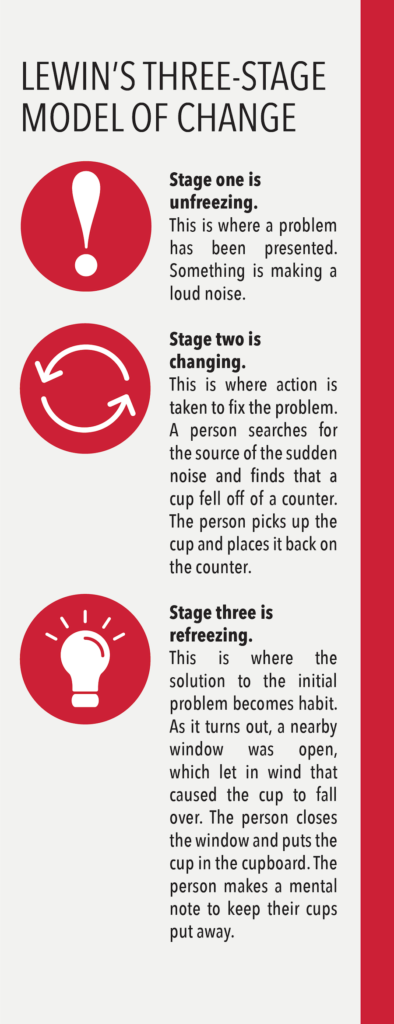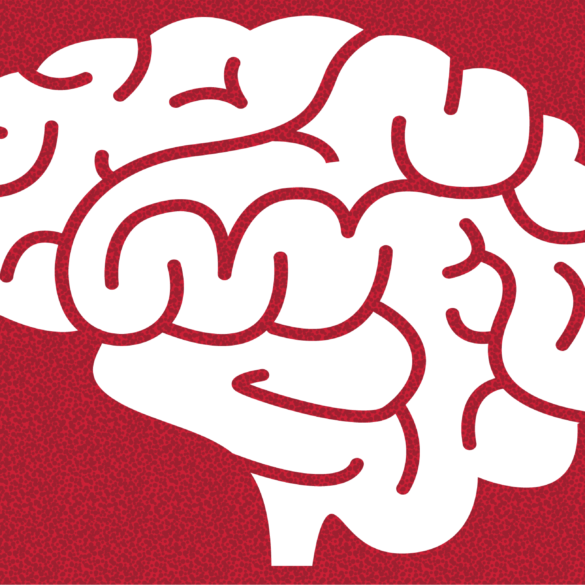The human brain is built to form and follow habits, which can make it hard to process new ideas.
Some people thrive on change. David Perkins, a professor of psychological science at Ball State University, says seeking thrills or being open-minded is related to personality. More often, however, change feels like a threat.

Biologically, change causes a few things to happen to the brain. Mona Fishbane, a licensed clinical psychologist, writes about how neurons operate to form habits. Brain cells communicate with one another as one neuron releases chemicals that are picked up by the receptors of the next neuron. This happens billions of times. These interconnected neurons become circuits that maintain our habits.
Think of these neurons as a group of friends. When someone picks up a new behavior, one friend notices and goes to tell another friend. This action continues until a large group of friends have all gathered and connected. Breaking habits can be hard for most people, as change tries to disrupt these groups of neurons that have built up over time. Once the brain adapts, the process starts all over again. Circuits of neurons control our habits, and our habits strengthen the circuits.
But that’s exactly how the brain is supposed to work, says Larry Richard, an expert on the psychology of lawyer behavior. Just as they are able to learn and adopt certain patterns, humans are wired to detect change.
This change can be as simple as a loud noise in a quiet room. Upon hearing it, the person’s understanding of their surroundings shifts. As the mind processes change, a lot of responses can occur. People who tend to have more anxiety might hear the noise and instantly start looking for where it came from and why it happened.This is an entirely normal reaction, Richard says, as the brain just tries to keep us safe. Others have better psychological resilience, meaning they might hear the noise and shrug it off immediately. The way people adapt to change is genetic, but it is unlike most genetic personality traits in that it’s easy to train.
The Lewin’s three-stage model of change shows how people can react to change with an understanding mindset. The model explains how one can first begin to not resist the change, accept it, and reinforce it as a new normal.
People don’t necessarily resent change as much as they do the initial problem, Richard says. Knowing a problem exists can be uncomfortable for people. That’s natural. This goes along with the anxiety some people might have when they first hear a sudden loud noise: They’re hit with the feeling that something’s not right. The change is not the problem: The problem is the problem.
Brian Webster, an assistant professor of management at Ball State, says negative change has more of an impact on people than positive change. For example, Webster says losing $10 would probably influence someone more than gaining $10 would. Good change just seems less important.
Since 2009, the United States Army has been using a program called Master Resilience Training. This 10-day course, which was designed to reduce the prevalence of post-traumatic stress disorder, depression, and substance abuse, teaches people in the Army how to manage difficult circumstances and have greater flexibility when faced with change. In a poll taken by the Army National Guard, more than 90 percent of participants said the training helped increase their psychological resilience. By learning how their brains react to change, people were able to find ways to think more positively, making difficult situations a little easier to handle.
This column was originally published in the fall 2018 print edition.




